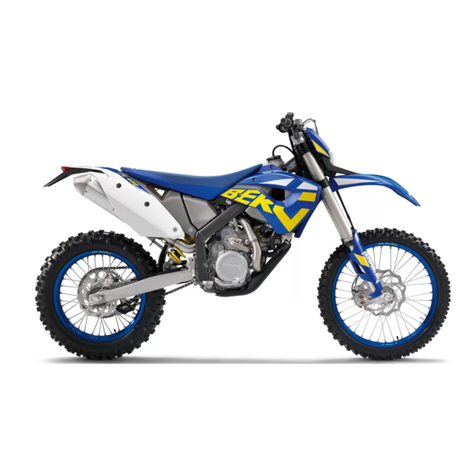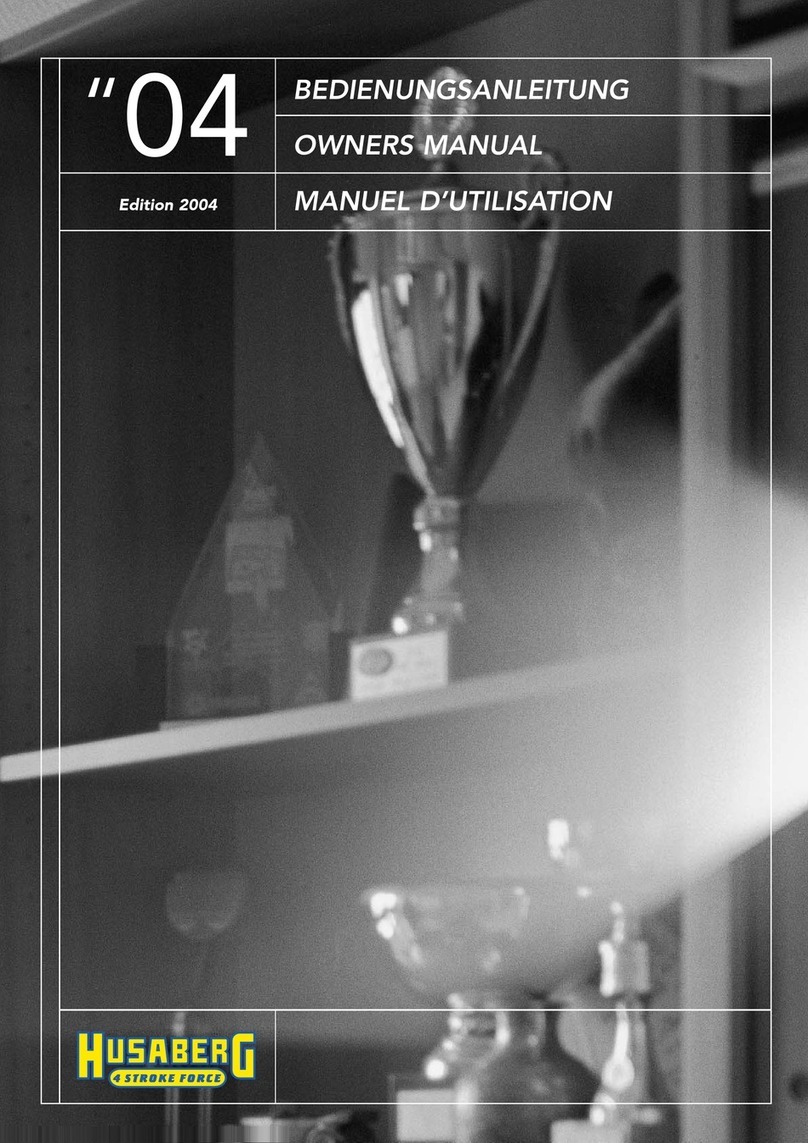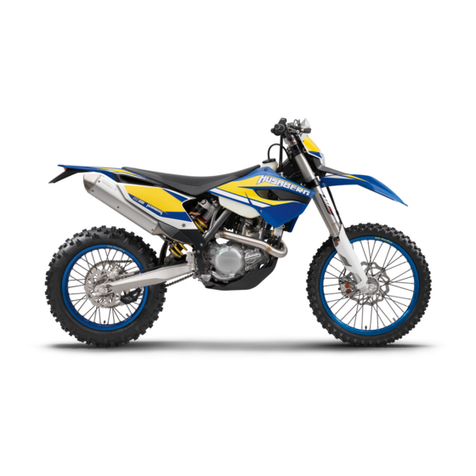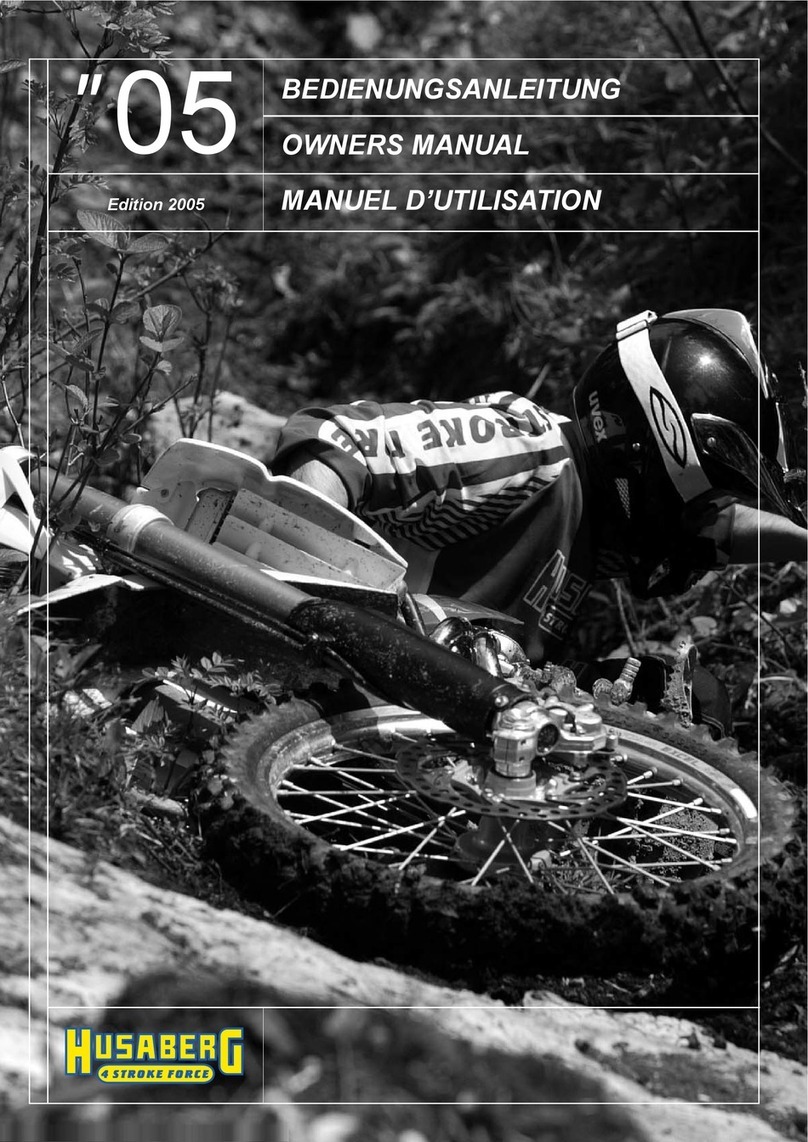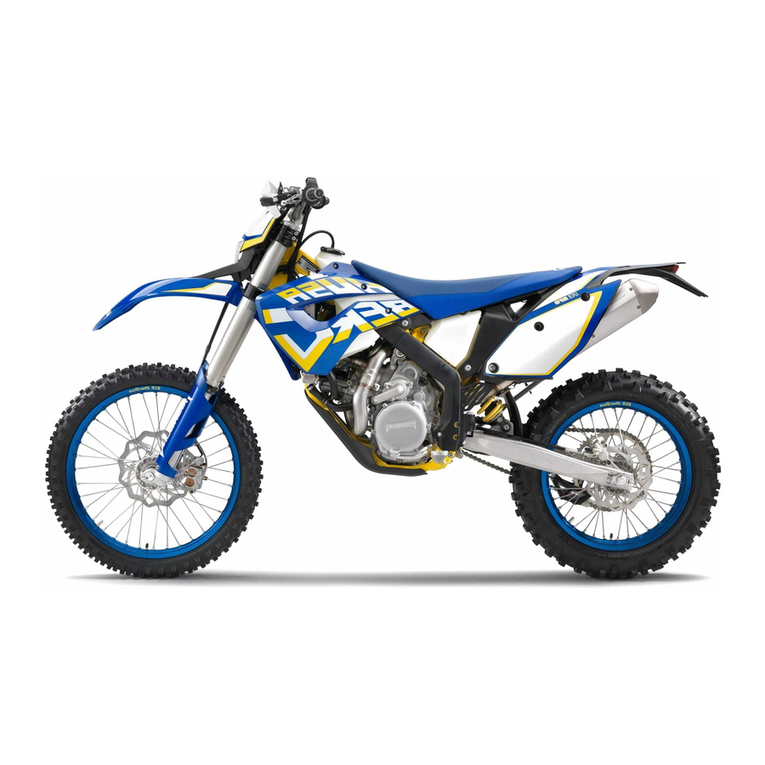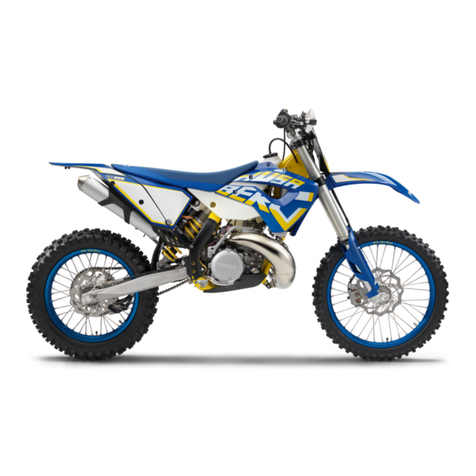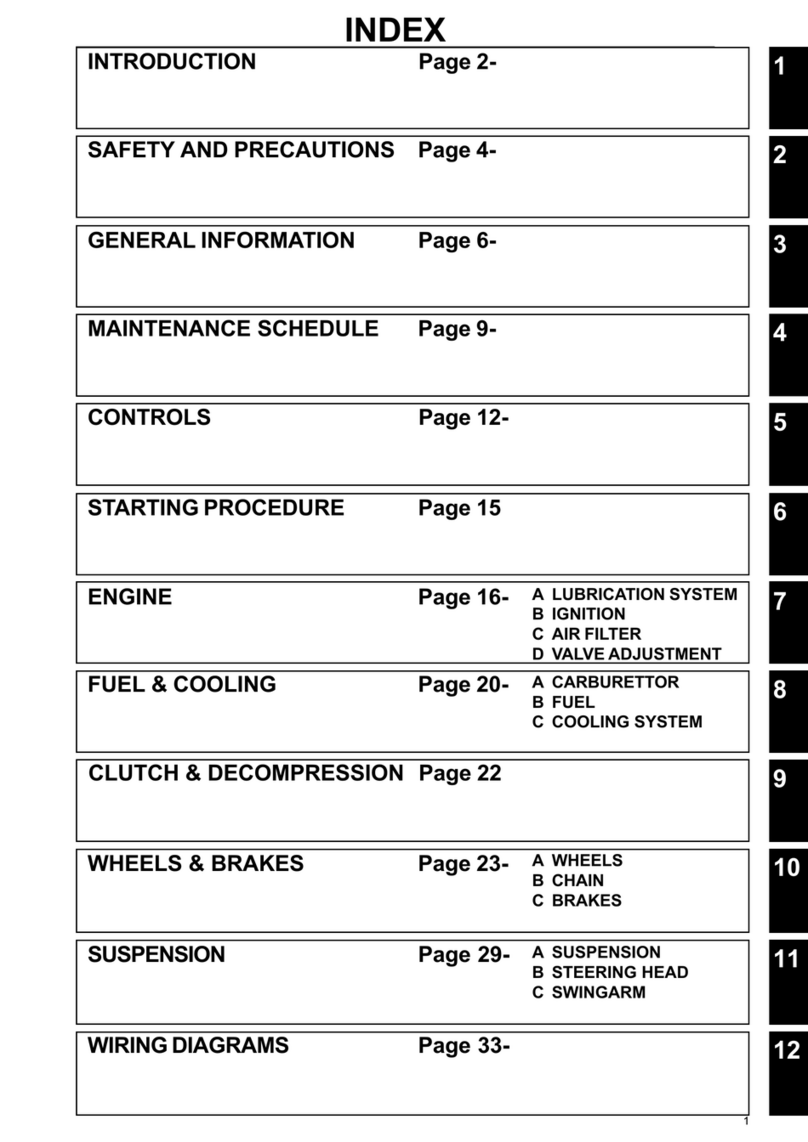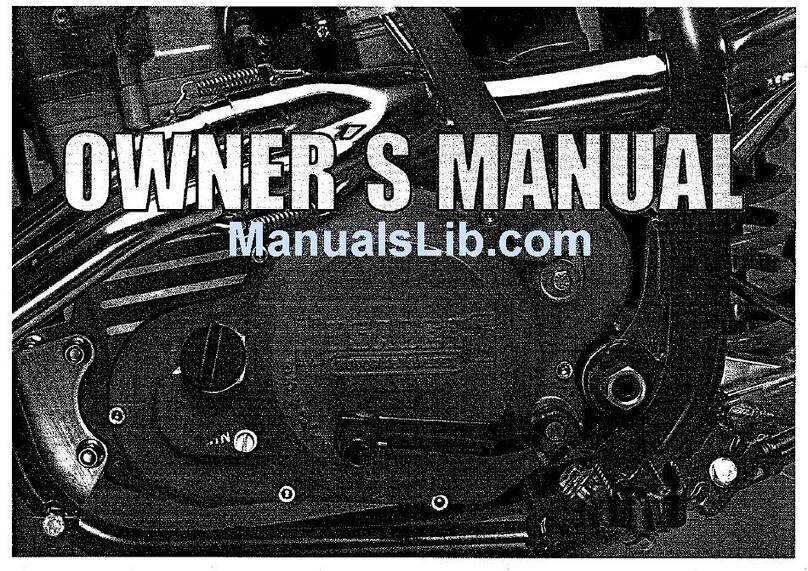
TABLE OF CONTENTS 2
TABLE OF CONTENTS
1 MEANS OF REPRESENTATION ..................................... 5
1.1 Symbols used ................................................... 5
1.2 Formats used.................................................... 5
2 SAFETY ADVICE........................................................... 6
2.1 Use definition - intended use ............................. 6
2.2 Safety advice.................................................... 6
2.3 Degrees of risk and symbols ............................... 6
2.4 Tampering warning............................................ 6
2.5 Safe operation .................................................. 7
2.6 Protective clothing ............................................ 7
2.7 Work rules........................................................ 7
2.8 Environment..................................................... 7
2.9 Owner's Manual ................................................ 8
3 IMPORTANT NOTES..................................................... 9
3.1 Manufacturer and implied warranty..................... 9
3.2 Operating and auxiliary substances ..................... 9
3.3 Spare parts, accessories .................................... 9
3.4 Service ............................................................ 9
3.5 Figures ............................................................ 9
3.6 Customer service............................................... 9
4 VIEW OF VEHICLE ..................................................... 10
4.1 View of vehicle, front left (example) .................. 10
4.2 View of vehicle, rear right (example) ................. 11
5 SERIAL NUMBERS .................................................... 12
5.1 Chassis number .............................................. 12
5.2 Type label (FE 250 EU, FE 250 AUS)............... 12
5.3 Key number (FE 250 EU, FE 250 AUS) ............ 12
5.4 Engine number ............................................... 12
5.5 Fork part number ............................................ 12
5.6 Shock absorber part number ............................ 13
6 CONTROLS................................................................ 14
6.1 Clutch lever.................................................... 14
6.2 Hand brake lever............................................. 14
6.3 Throttle grip ................................................... 14
6.4 Kill switch (FE 250 EU, FE 250 AUS) .............. 14
6.5 Kill switch (FE 250 USA) ................................ 14
6.6 Horn button (FE 250 EU, FE 250 AUS) ............ 15
6.7 Light switch (FE 250 EU, FE 250 AUS)............ 15
6.8 Light switch (FE 250 USA) .............................. 15
6.9 Turn signal switch (FE 250 EU, FE 250 AUS) ... 15
6.10 Emergency OFF switch (FE 250 AUS)............... 15
6.11 Electric starter button (FE 250 EU,
FE 250 USA).................................................. 16
6.12 Electric starter button (FE 250 AUS) ................ 16
6.13 Overview of indicator lamps (FE 250 EU,
FE 250 AUS).................................................. 16
6.14 Overview of indicator lamps (FE 250 USA) ........ 16
6.15 Opening filler cap ........................................... 16
6.16 Closing filler cap............................................. 17
6.17 Idle speed adjusting screw............................... 17
6.18 Shift lever ...................................................... 18
6.19 Foot brake lever .............................................. 18
6.20 Side stand...................................................... 18
6.21 Steering lock (FE 250 EU, FE 250 AUS)........... 19
6.22 Locking the steering (FE 250 EU,
FE 250 AUS).................................................. 19
6.23 Unlocking the steering (FE 250 EU,
FE 250 AUS).................................................. 19
7 SPEEDOMETER ......................................................... 20
7.1 Overview ........................................................ 20
7.2 Activation....................................................... 20
7.3 Message on the speedometer ........................... 20
7.4 Setting the speedometer.................................. 20
7.5 Setting kilometers or miles............................... 21
7.6 Setting the clock............................................. 22
7.7 Setting the service display ............................... 22
7.8 Speed, time, and DST distance 1 ..................... 23
7.9 Speed, time, and DST2 distance 2 ................... 23
7.10 AVG average speed, ART operating hours, and
ODO total distance covered .............................. 23
8 PREPARING FOR USE................................................ 24
8.1 Advice on first use .......................................... 24
8.2 Running-in the engine..................................... 25
8.3 Preparing the vehicle for difficult riding
conditions ...................................................... 25
8.4 Preparing for rides on dry sand......................... 26
8.5 Preparing for rides on wet sand ........................ 26
8.6 Preparing for rides on wet and muddy
surfaces ......................................................... 27
8.7 Preparing for rides at high temperature and
slow speed ..................................................... 27
8.8 Preparing for rides at low temperature or in
snow.............................................................. 27
9 RIDING INSTRUCTIONS............................................. 28
9.1 Checks and maintenance work when preparing
for use ........................................................... 28
9.2 Starting.......................................................... 28
9.3 Starting off..................................................... 29
9.4 Shifting, riding ............................................... 29
9.5 Braking.......................................................... 29
9.6 Stopping, parking............................................ 30
9.7 Transport ....................................................... 30
9.8 Refueling ....................................................... 31
10 SERVICE SCHEDULE ................................................. 32
10.1 Service schedule............................................. 32
10.2 Service work (as additional order) ..................... 33
11 TUNING THE CHASSIS .............................................. 34
11.1 Checking the basic chassis setting with the
rider's weight.................................................. 34
11.2 Compression damping of shock absorber ........... 34
11.3 Adjusting the low-speed compression damping
of the shock absorber ...................................... 34
11.4 Adjusting the high-speed compression
damping of the shock absorber......................... 35
11.5 Adjusting the rebound damping of the shock
absorber......................................................... 35
11.6 Measuring rear wheel sag unloaded................... 36
11.7 Checking the static sag of the shock absorber.... 36
11.8 Checking the riding sag of the shock absorber.... 36
11.9 Adjusting the spring preload of the shock
absorber x.................................................... 37
11.10 Adjusting the riding sag x.............................. 37
11.11 Checking basic setting of fork .......................... 38
11.12 Adjusting the compression damping of the
fork ............................................................... 38
11.13 Adjusting the rebound damping of the fork ........ 38
11.14 Handlebar position.......................................... 39
11.15 Adjusting the handlebar position x................. 39
12 SERVICE WORK ON THE CHASSIS.............................. 41
12.1 Raising the motorcycle with a lift stand............. 41
12.2 Removing the motorcycle from the lift stand...... 41
12.3 Bleeding fork legs ........................................... 41
12.4 Cleaning the dust boots of the fork legs............. 41
12.5 Loosening the fork protector............................. 42
12.6 Positioning the fork protection.......................... 42
